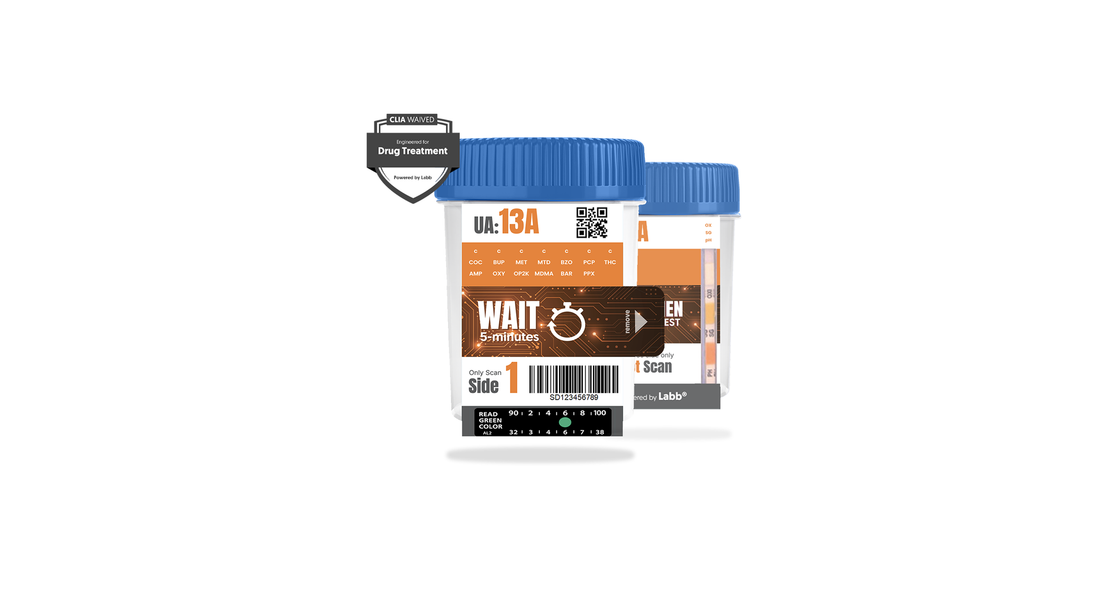
The Advantages of Testing for Norbuprenorphine Over Buprenorphine in Substance Use Disorder Treatment
Introduction
The opioid crisis has necessitated the development and implementation of effective treatment protocols for opioid use disorder (OUD). Buprenorphine, a partial opioid agonist, is a critical component of such treatments. This paper focuses on the advantages of testing for norbuprenorphine, the primary metabolite of buprenorphine, in addition to and eventually in replacement of testing for buprenorphine itself, to ensure patient compliance and enhance the reliability of drug testing in OUD treatment.
Background
Buprenorphine was approved by the U.S. Food and Drug Administration (FDA) for the treatment of opioid use disorder (OUD) in October 2002. Buprenorphine functions by partially activating opioid receptors, reducing cravings and withdrawal symptoms. Norbuprenorphine, the primary metabolite, is formed in the liver after buprenorphine ingestion.
The concentrations of buprenorphine and its metabolite norbuprenorphine in urine can vary based on several factors, including the dosage, frequency of use, metabolism, and time since the last dose. Generally, norbuprenorphine is found in much higher concentrations than buprenorphine in urine.
Here are some typical ranges for the concentration levels:
- Buprenorphine: The concentration of buprenorphine in urine can range from approximately 1 to 20 ng/mL.
- Norbuprenorphine: The concentration of norbuprenorphine is typically higher, ranging from about 5 to 100 ng/mL or more.
These ranges can vary widely among individuals due to differences in metabolism and other physiological factors. Testing for norbuprenorphine is often preferred because its higher concentration and longer detection window make it a more reliable indicator of medication adherence.
Understanding the many benefits of testing for norbuprenorphine is crucial for improving treatment adherence and long term patient outcomes.
The Key Advantages of Testing for Norbuprenorphine
1. Ensuring Medication Consumption
Key Point: Norbuprenorphine testing verifies that the medication has been ingested and metabolized by the body, whereas buprenorphine testing can be easily manipulated.
Testing for norbuprenorphine offers a clear advantage in confirming medication adherence. When a patient takes buprenorphine as prescribed, it is metabolized into norbuprenorphine, which is then detectable in urine. Testing solely for buprenorphine allows patients to cheat by adding the medication directly to their urine sample at the time of testing. This manipulation undermines the reliability of the test and may falsely indicate patient compliance.
2. Enhanced Detection Window
Key Point: Norbuprenorphine has a longer detection window than buprenorphine, providing a more accurate assessment of medication adherence.
Norbuprenorphine remains detectable in the body for a longer period than buprenorphine due to its prolonged half-life. This extended detection window offers a more accurate reflection of a patient’s medication-taking behavior over time, reducing the likelihood of false-negative results and enhancing the monitoring process.
3. Improved Compliance Monitoring
Key Point: Regular testing for norbuprenorphine can better monitor and enforce patient compliance with prescribed treatment regimens.
Regular and random testing for norbuprenorphine can deter patients from attempting to manipulate their urine samples. This improved monitoring helps clinicians ensure that patients are adhering to their treatment plans, which is critical for achieving long-term recovery and reducing the risk of relapse.
4. Reliable Interpretation of Results
Key Point: Norbuprenorphine levels in urine provide a more reliable indicator of buprenorphine consumption and metabolism.
Interpreting test results based on norbuprenorphine levels is more straightforward and reliable compared to buprenorphine. Buprenorphine levels can fluctuate due to various factors, including direct adulteration of urine samples. In contrast, norbuprenorphine levels reflect the body's metabolic processes, offering a consistent and reliable measure of medication adherence.
Clinical Implications
Implementing norbuprenorphine testing in clinical practice can significantly improve the management of OUD treatment. It enhances the accuracy of drug testing, deters cheating, and provides a reliable measure of patient compliance. These benefits can lead to better treatment outcomes and support long-term recovery efforts.
Case Studies and Data
Several studies have demonstrated the benefits of norbuprenorphine testing. For instance, research by McCance-Katz et al. (2010) highlighted the longer detection window and reliability of norbuprenorphine in monitoring patient adherence. Additionally, clinical data from various treatment centers show a reduction in test manipulation when switching from buprenorphine to norbuprenorphine testing.
Conclusion
Testing for norbuprenorphine offers clear advantages over buprenorphine testing in OUD treatment. It ensures medication consumption, provides a longer detection window, improves compliance monitoring, and offers reliable interpretation of results. Implementing norbuprenorphine testing can enhance the effectiveness of OUD treatment protocols, ultimately supporting better patient outcomes and long-term recovery.
References
- McCance-Katz, E. F., Sullivan, L. S., & Nallani, S. (2010). Drug Interactions of Clinical Importance among the Opioids, Methadone and Buprenorphine, and Other Frequently Prescribed Medications: A Review. American Journal on Addictions, 19(1), 4-16.
- Additional relevant studies, data, and reports that support the arguments and details discussed in this white paper.
